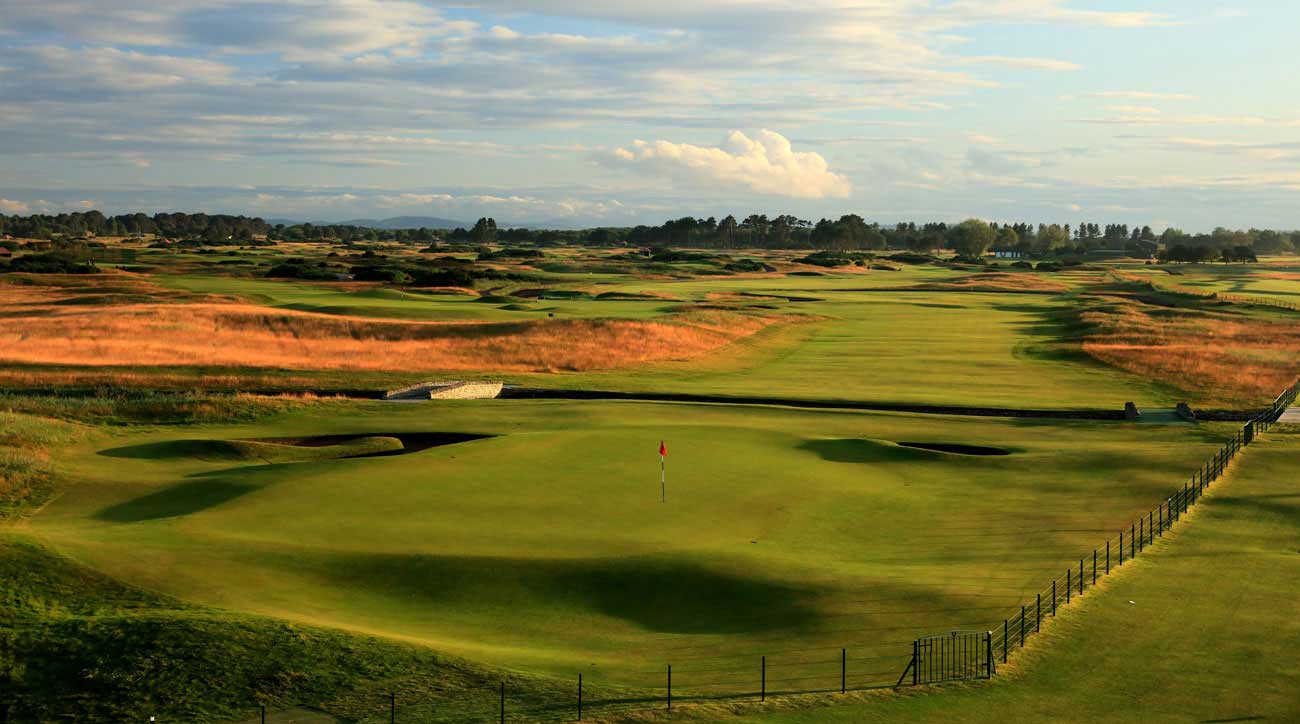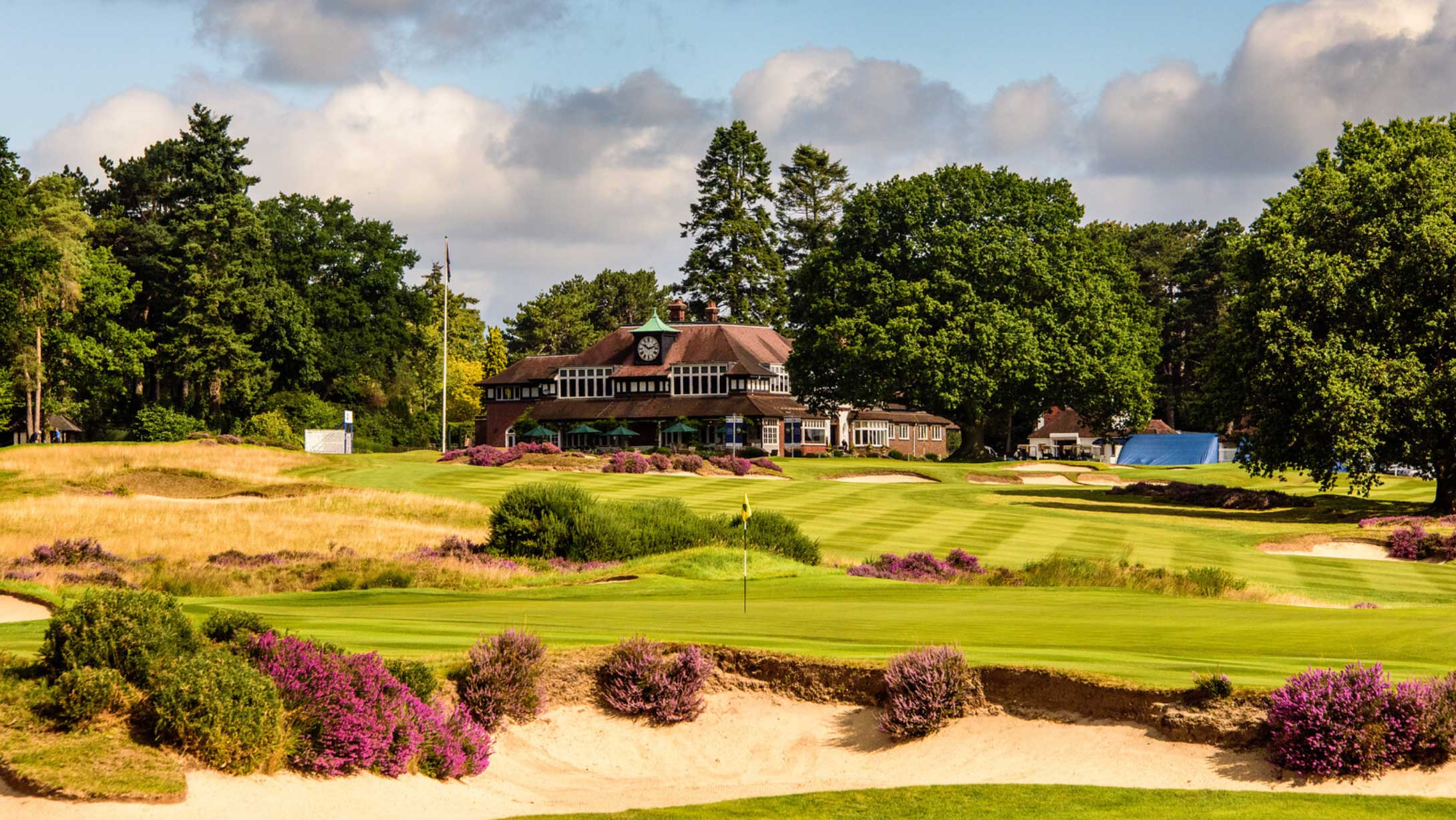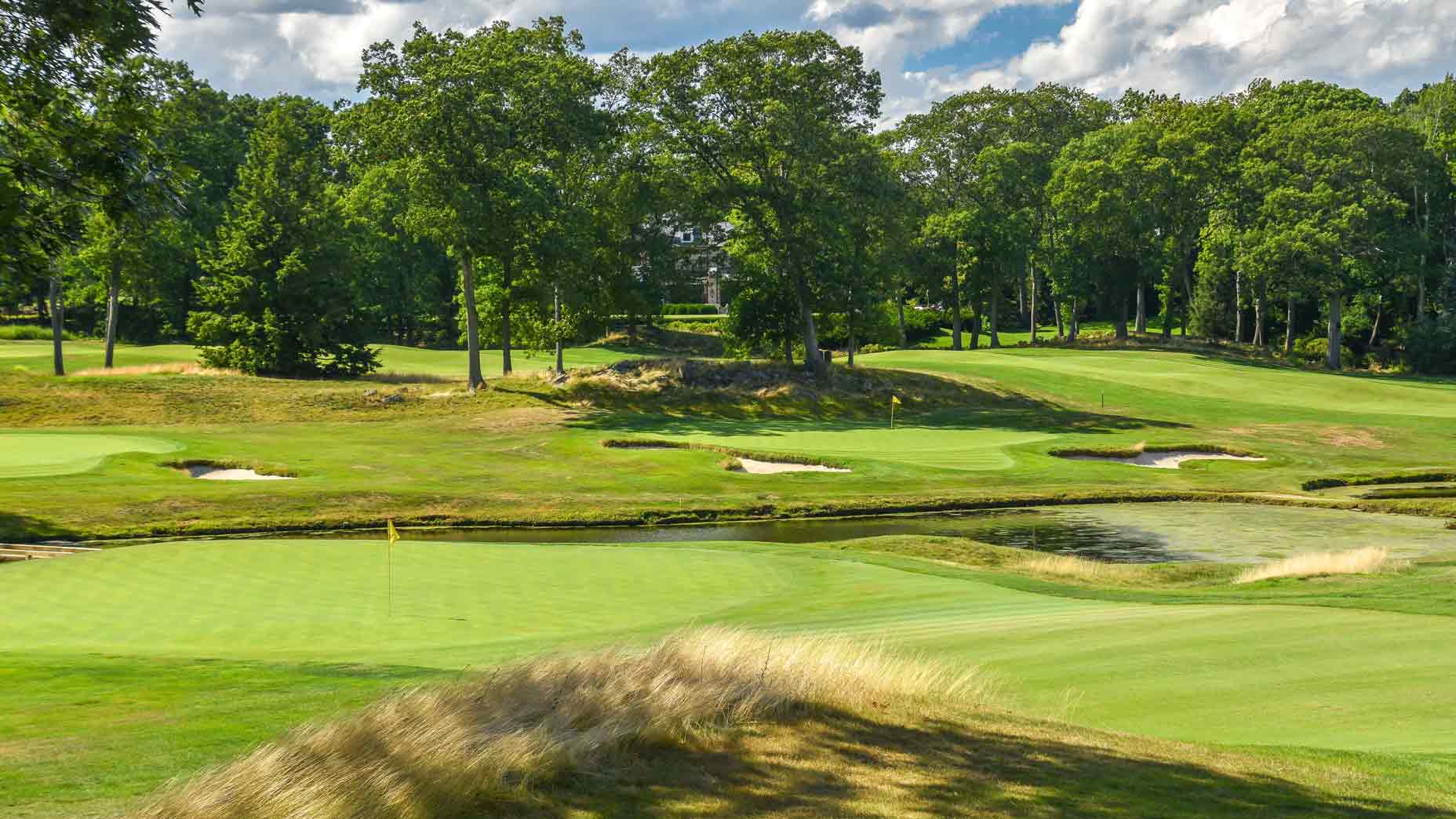Last month, GOLF staffers Zephyr Melton, James Colgan and Emily Haas headed east of New York City to Bethpage State Park for a golf marathon. Over the course of 36 hours, they played all five courses Bethpage has to offer — the Blue, Yellow, Green, Red and, of course, the Black — and documented their entire journey. Here are their takeaways from the 90-hole Bethpage Gauntlet.
What’s it like driving into the parking lot at Bethpage for the first time?
Zephyr Melton, assistant editor (@zephyrmelton): It’s strangely … normal? Everyone has heard of Bethpage, so when I went for the first time I was expecting more grandeur. In reality, it’s just like any other muni. It’s welcoming and unassuming. The People’s Country Club moniker is well-earned.
Emily Haas, project analyst (@emilycarole): Zephyr is right. My first time there, I took the LIRR from Penn Station to Farmingdale then got an Uber to the course — though it’s actually close enough to the train station to make the walk if necessary. When our car pulled up, the lot is pretty much what you’d expect — big enough to fit cars for five courses, a restaurant, and an event venue — nothing out of the ordinary.
James Colgan, assistant editor (@jamescolgan26): If you’re a Long Islander, you’re trained to think first of your parking spot, then everything else. Bethpage is no different. If you’re lucky, though, your first drive will feature a glimpse at one of the park’s all-time great traditions: the post-round tailgate.
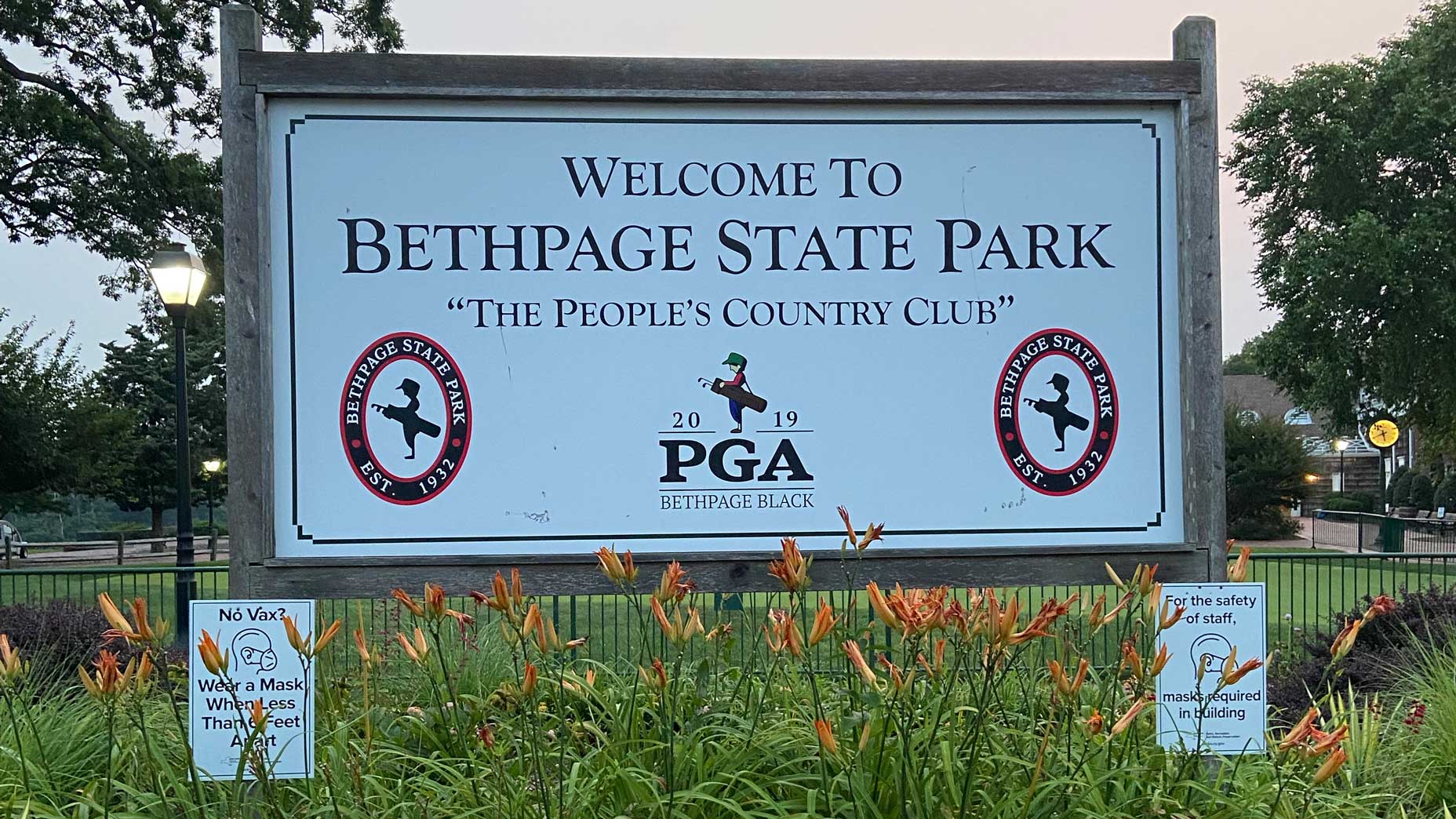
You started on the Blue, what are your thoughts on the course?
Melton: I’m not the biggest fan of the Blue, but I think that can partially be attributed to it kicking my teeth in at 5:45 a.m. There’s lots of elevation change on the course, and it can play a bit long if you don’t hit it to the right spots. The back nine has a nice little stretch of holes from 12-16, but overall I’d say it’s my least favorite of the bunch.
Haas: Yeah, the Blue used to be one of my favorites, but after experiencing all five courses back-to-back, I’d have to say it’s at the bottom of my list. Don’t get me wrong, I’ll be back, but the walk is pretty brutal.
Colgan: The Blue earns a lot of acclaim for being the easiest of the three Tillinghast courses on the Bethpage property (an easily attainable honor with the Red and Black courses as competitors), but it’s a true Jekyll & Hyde course. Alfred Tull’s renovation of the front nine in the 50s made way for the Yellow Course and muted many of Tillinghast’s original design features, which is only evident upon making your way to the back nine. The front, which seemingly features nine elevated tees and greens, is target golf. The back? Classic Tillinghast.
The Yellow Course doesn’t get much press, but you all seemed to enjoy it. What’s the skinny?
Melton: I’m a BIG fan of the Yellow Course. It’s fairly straightforward and not too long, but there are still some interesting holes. They also keep the track in great condition. If you can’t get on the Red or the Black, I’d recommend the Yellow to anyone headed to Bethpage.
Haas: The Yellow Course rocks! It’s like a junior version of the Black — fescue, fast greens, excellent condition. The only difference is it’s super gettable if you’re hitting the ball well, and you’ll walk away feeling extreme confidence. What golfer doesn’t love that?
Colgan: Eh. I’m still pretty lukewarm on the Yellow Course. There’s a whole lot of room to make something happen, which makes it a very fun course for scoring well. But there’s not much else! It’s an amazing course for beginner golfers (a younger me among them), but I’m not sure how much more it adds.
How does the Green Course compare?
Melton: The Green Course is similar to the Yellow in that it’s all right in front of you, but there is far less elevation change. It has a parkland feel to it and there are some interesting green complexes on several holes. It’s perfect for a leisurely day on the links.
Haas: The Green Course feels like your classic, standard muni. It’s rough around the edges, but in overall good shape and definitely has the slowest pace of play out of every course at Bethpage State Park. That being said, none of our rounds took more than five hours. The greens are super fun — almost wavy (that’s probably not the technical word, but you get the idea).
Colgan: The Green is (surprisingly) the oldest Bethpage Course, which might not show at first glance. Originally named Lenox Hills Country Club, it was absorbed into Bethpage State Park in the late 1920s, shortly before A.W. Tillinghast was hired to complete routings for what are now the Blue, Red and Black Courses. It’s a cunning little course designed by Devereux Emmet with a handful of entertaining holes. Where the Green sticks out is in its … greens, which have a bit more contour than Yellow or Blue.
After surviving a 54-hole day, what are your recovery tips?
Melton: Advil and icy hot. A pint of ice-cold beer also helps.
Haas: Say no to the birthday drinks you’re invited to the night before. Get lots of rest, drink plenty of water, change shoes between rounds and you’ll honestly be fine. I did not think the 54-hole walk was as bad as it sounds.
Colgan: Hydrate. Shower. Sleep. Cry. Not necessarily in that order.

The Red Course is universally loved (No. 8 on GOLF’s Best Under $150 List). What are some key takeaways?
Melton: This was my first crack at the Red, and you can count me as a big fan. At par-70 you can card some great scores, but the course is not easy by any stretch. If you want the perfect balance between tough and scorable, the Red is a great bet.
Haas: Red is in my top-three most favorite golf courses to play of all time. I LOVE a good dogleg, and Red has them galore. It’s one of those courses that really makes you think, and requires the right strategy to score well. If you crack the code and execute your shots, you’ll be pretty happy heading into the clubhouse.
Colgan: It’s hard not to love the Red. It’s beautiful, undulating, quirky and exceptionally well-conditioned. For my money, it’s the second-best public golf course on Long Island, it just happens to fall in the direct shadow of its brutish sibling, the Black.
You saved the Black Course for last. Explain what makes the course so demanding.
Melton: Everything is bigger on the Black. The holes are long, the bunkers are deep, and the elevation change is severe. And once you hit your ball in the thick rough, good luck getting it out. The warning on the first tee box should be heeded. Bring your A+ game if you want to play well on the Black. And even then, it might not be enough.
Haas: It’s SOOOOOOOO long, the rough is too thick for my weak little forearms to muster up a shot with anything longer than a pitching wedge and the greens are fast and don’t break like you’d expect!
Colgan: I don’t know Em, for all that “weak little forearms” talk, you sure had no problem making the most impressive sand-save par I’ve ever seen on No. 10. Anyway, what makes the Black Course so difficult is that it never stops pummeling you. From first tee to 18th, you earn every single inch (and for those of us with the misfortune of getting buried in the fescue, that could well mean literally).
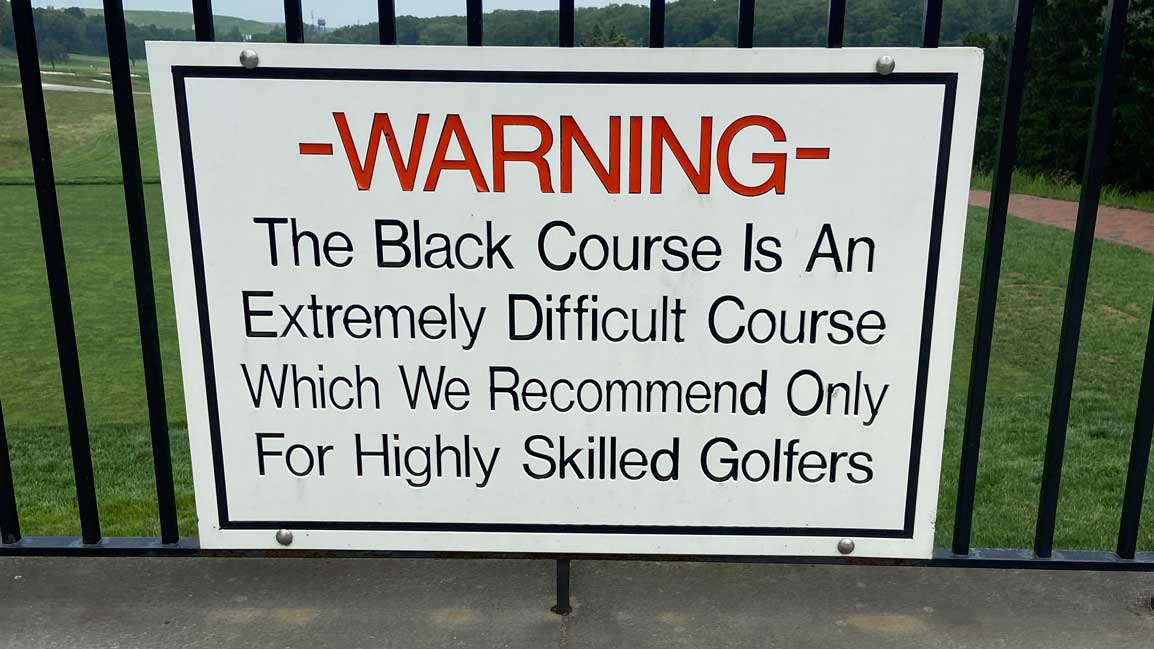
What was your favorite hole on the property?
Melton: No. 17 on the Black. The long par-3 is well-guarded by bunkers and the hill behind the green acts as a natural amphitheater. It’s easy to imagine the electricity in the atmosphere around this hole during a major championship.
Haas: What a tough question! I think I need to go with No. 13 on the Red. It’s a split fairway that requires you to decide: do I go for the narrow side of the fairway and risk going into the trees on the left for a better angle to the pin? (Yes.) Or, do I go up the right side of the fairway and contend with the large front greenside bunker and narrow green?
Colgan: The best hole on the entire property is probably No. 4 on Black. The hardest is unquestionably No. 15 on Black. My favorite, though? No. 5 on the Red Course, a delightfully gettable par-5. It’s the sort of hole where good outcomes are accessible, but not necessarily guaranteed. A good drive off the tee and you’ve got a reasonable play into an elevated green in 2. Anything worse than par on this hole, and you’re in for a long day.
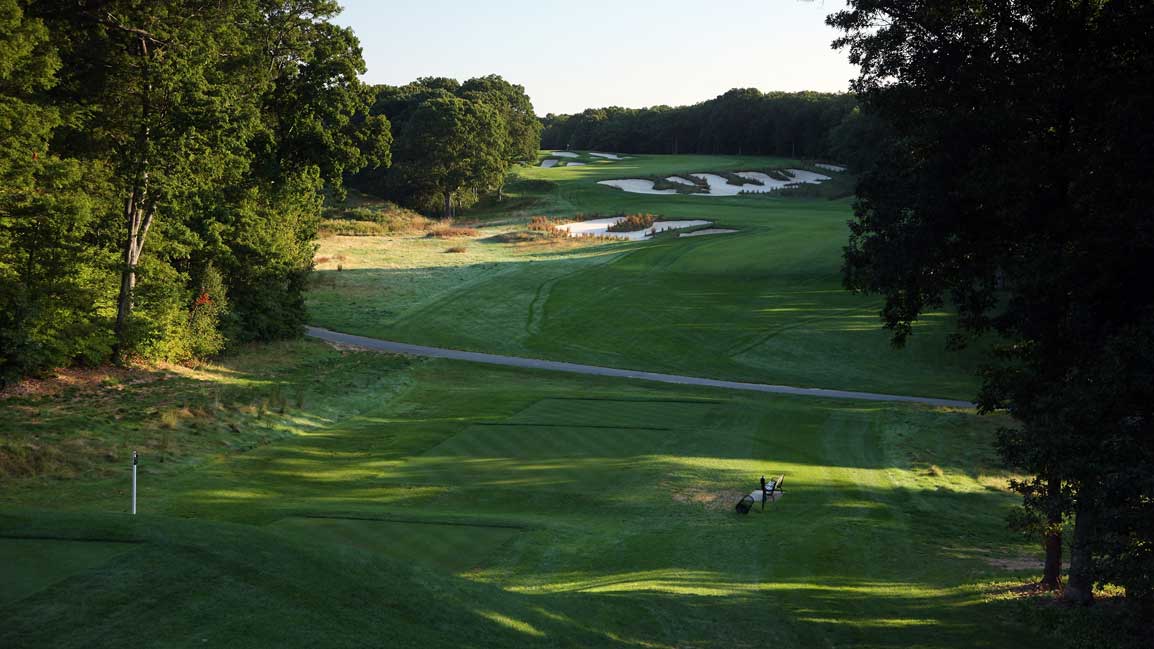
What is your favorite memory from the Gauntlet?
Melton: Walking up the hill to the 18th green. After 36 hours of non-stop golf, it was rewarding to finally reach the summit.
Haas: Hmmm, it’s hard to pinpoint an exact moment from the actual golf that stands out as my favorite memory, but I did really love recounting each round with James and Zephyr over a surprisingly fabulous salad in the clubhouse. I typically order the turkey club (which is also excellent), but the salad was giant, fresh, and extremely satisfying after a long morning with another round on the books after lunch.
Colgan: A weird sunset (we were told from the California wildfires) on the Green Course at the end of our 54-hole day set the perfect scene for the Gauntlet. Two coworkers and great friends walking to an elevated tee box, before us: a blazing red orb descending over the skyline and a perfect vantage point of the property.
Any advice for golfers trying to conquer the Gauntlet?
Melton: Prepare for some mental deterioration. I figured my body would feel most of the effects of a golf marathon, but the most challenging aspect was keeping myself mentally engaged. Safe to say I didn’t have the same mental edge on hole 90 as I did on hole 1. But just remember you’re there to have fun! Bad shots will happen, but the memories from the Gauntlet will last forever.
Haas: It was definitely tough to stay focused for that long. By the end of the challenge, I found myself having to really think about the shot at hand (sometimes even saying my plan out loud) to avoid silly, lazy mistakes.
Colgan: Time is your friend. Build in more of it than we did. Oh, and that post-Gauntlet beer is exactly as good as it sounds.



